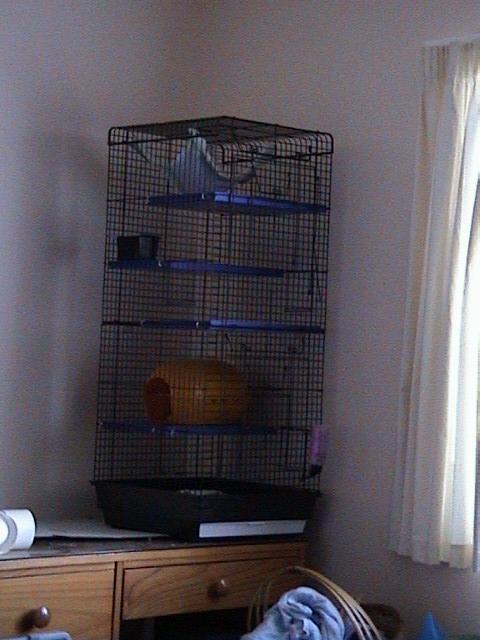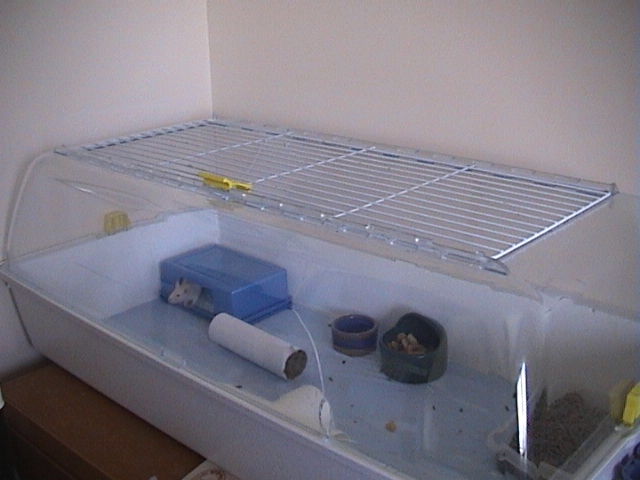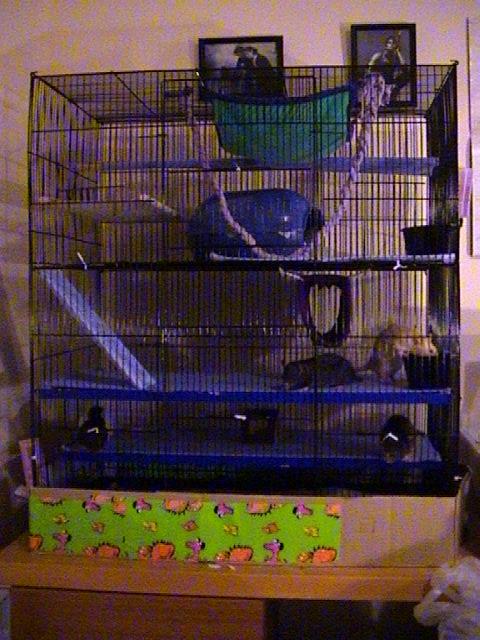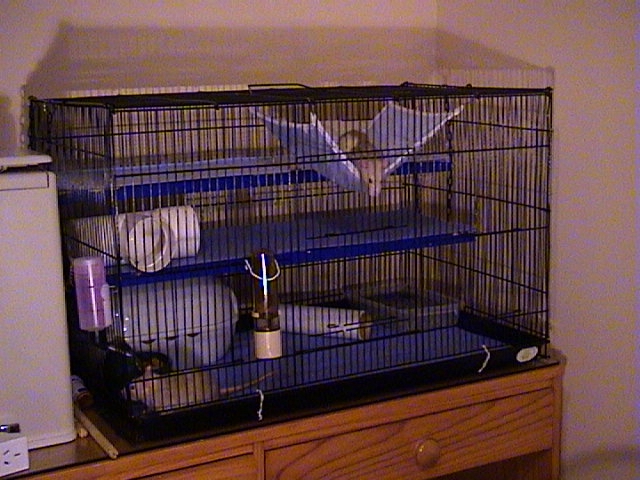 |
| HOUSING |
| Even the best-loved rats spend a good proportion of their time in their cage. Therefore it should be as spacious, comfortable and interesting as possible. The positioning of the cage is important. Make sure it is not in a spot where direct sun will shine on it. This will overheat your ratties which is very dangerous! Also avoid areas where there are draughts, sudden temperature fluctuations, or lots of loud scary noises (we don't keep any rats in my hubby's drumming room!). Once you have a suitable location in mind, it's time to get yourself a cage. I have not found any entirely suitable rat houses for sale in New Zealand. However there are several options that can be adapted to suit. I have three rat houses: |
 |
| TIMMY TOWERS |
| This is a parrot cage, 37cm wide x 37cm deep, and 100cm high. I made the shelves out of untreated pine, cut to length and covered with decoratorís contact adhesive. They are held in place by cup hooks on each end which hook over the horizontal cage bars. |
| This is a finch flight cage, 77cm wide x 45cm deep x 90cm high. The shelves are lengths of MDF covered with decoratorís contact adhesive. They are held in place by cup hooks on the ends that hook over the horizontal bars. I removed the wire floor section of the cage from the base and re-attached it halfway up, with a hole cut for access between levels. I have covered this with a matching sheet of thin MDF covered in contact adhesive (to protect sensitive feet). I have a cardboard barrier around the bottom to keep the litter and raisins inside the cage, instead of on my carpet!!! |
 |
| THE DUNA |
| This is a large Hagen Duna, designed primarily for hamsters and small rabbits. It is currently unoccupied, and I intend to use it as a hospital cage (if needed). It's good for old, crippled rats as it is all one level. The ventilation is probably not ideal, so care must be taken to remove any urine-soaked items promptly. It is very easy to clean though!! |
| When purchasing a rat house, consider that they need good ventilation, as rat urine produces ammonia vapours that can hurt ratís respiratory systems. Some people like to use large glass tanks with wire lids. These are fine as long as they are kept really clean so the urine cannot build up. Wire cages should have a powder-coated finish; bare wire can contain harmful substances. Also ensure the bars are not so far apart that ratties could escape, or so close together that their feet become stuck. The main rule with rat cages is THEY CAN NEVER BE TOO BIG. For some excellent rat house ideas, have a look at The Grotto. Learn how to build a rat mansion from a large cupboard. Check out other peopleís cages here too. There are also brilliant ideas on furnishing the cage so that cleaning is easy, and there are ideas for rat toys, hammocks, etc. I have furnished both my cages using ideas and information from this site. Home |
 |
 |
| THE BATCHELOR PAD |
| This is another finch flight cage, 77cm long, 45cm deep and 45cm high. The shelves are pine, covered in decorator's contact adhesive, and suspended on chains by cup hooks in each end. The chains are attached to the top of the cage with the round metal things you keep keys on (nice strong ones). The wire floor has been completely removed to prevent bumblefoot. |
| THE GIRL'S APARTMENT |
| Sarah |
| Lara |
| Phoebe |
| Wilma |
| Ramp |
| Rody-Igloo |
| Hammock |
| Bart |
| Chester |